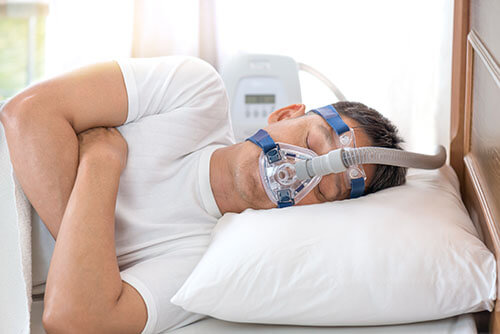Treatments for Sleep Apnea

How do we treat obstructive sleep apnea?
Therapy for Sleep Apnea
- Positive airway pressure is the first-line treatment for sleep apnea.
- CPAP applies air pressure using a machine to keep your airway open during sleep.
- BiPAP applies one pressure when you inhale, and another when you exhale.
- AutoPAP adjusts the pressure it applies according to how much resistance it senses in the airway.
- Positive pressure can be applied with a machine through a variety of different masks that either go in the nose, over the nose, or over the nose and mouth.
- It is important to determine how symptoms of sleep apnea change when positive pressure is used to treat sleep apnea.
- Some people cannot wear or use PAP nightly. Further evaluation with Otolaryngology (ENT) and Sleep Medicine can often enhance and improve the ability to use PAP.
An oral appliance pulls the lower jaw forward along with the tongue to create more space in the upper airway.
- A significant weight change can improve the severity of OSA.
- People with BMI (Body Mass Index) > 35 do not have as good outcomes after surgery.
Alcohol relaxes the muscles in your throat and can make OSA worse.
- Sleeping on the back leads to more significant sleep apnea and snoring in some patients.
- Sleeping on your side can reduce OSA.
- Different sleep positioners or pillows can help keep you on the side during sleep.
There is some evidence that routine tongue and mouth exercises can reduce sleep apnea and snoring in people with MILD sleep apnea.
Surgery can be helpful in some patients who cannot use positive pressure.
To learn more about surgery for sleep apnea, please click here.
